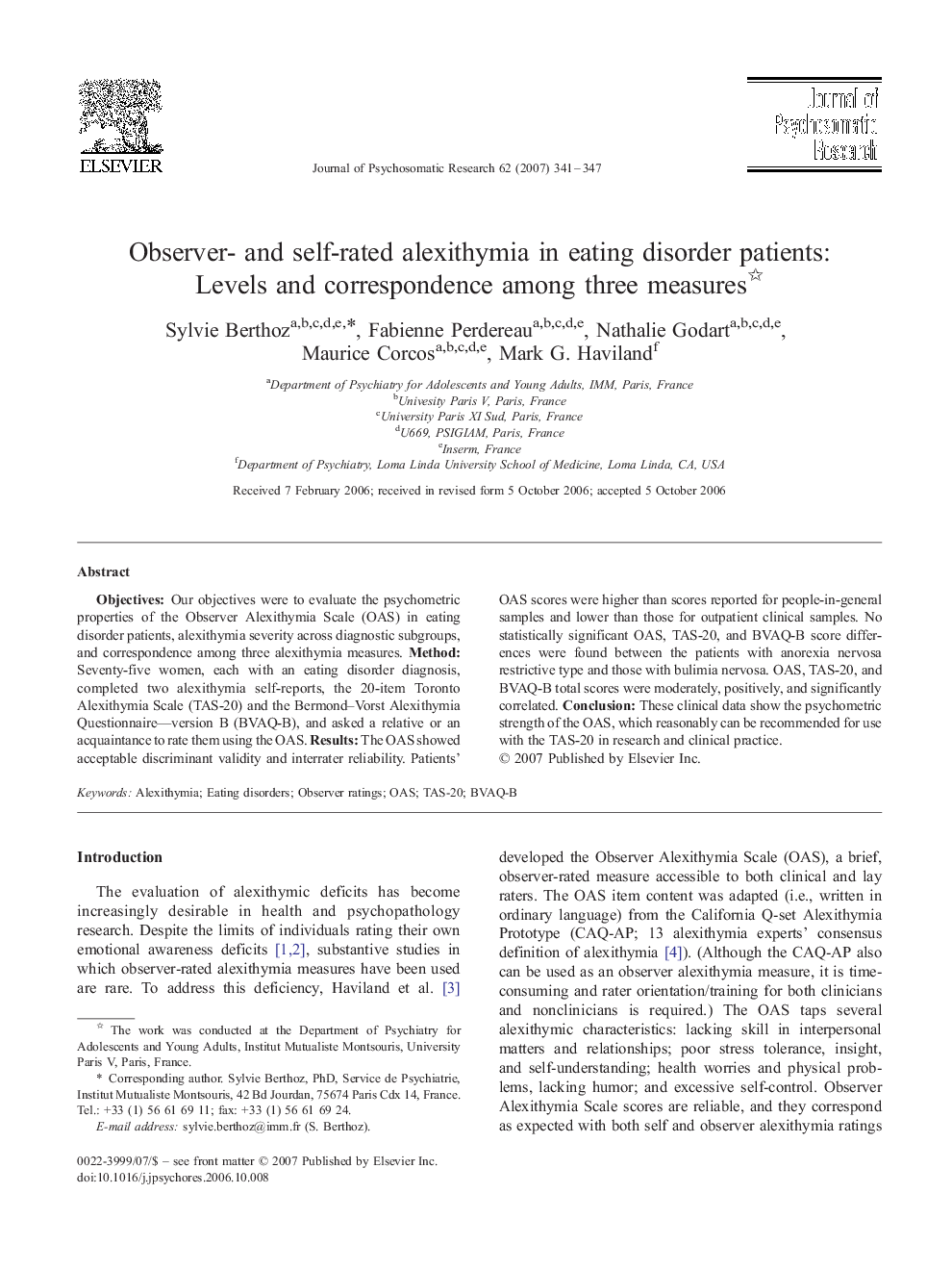| Article ID | Journal | Published Year | Pages | File Type |
|---|---|---|---|---|
| 950342 | Journal of Psychosomatic Research | 2007 | 7 Pages |
ObjectivesOur objectives were to evaluate the psychometric properties of the Observer Alexithymia Scale (OAS) in eating disorder patients, alexithymia severity across diagnostic subgroups, and correspondence among three alexithymia measures.MethodSeventy-five women, each with an eating disorder diagnosis, completed two alexithymia self-reports, the 20-item Toronto Alexithymia Scale (TAS-20) and the Bermond–Vorst Alexithymia Questionnaire—version B (BVAQ-B), and asked a relative or an acquaintance to rate them using the OAS.ResultsThe OAS showed acceptable discriminant validity and interrater reliability. Patients' OAS scores were higher than scores reported for people-in-general samples and lower than those for outpatient clinical samples. No statistically significant OAS, TAS-20, and BVAQ-B score differences were found between the patients with anorexia nervosa restrictive type and those with bulimia nervosa. OAS, TAS-20, and BVAQ-B total scores were moderately, positively, and significantly correlated.ConclusionThese clinical data show the psychometric strength of the OAS, which reasonably can be recommended for use with the TAS-20 in research and clinical practice.
